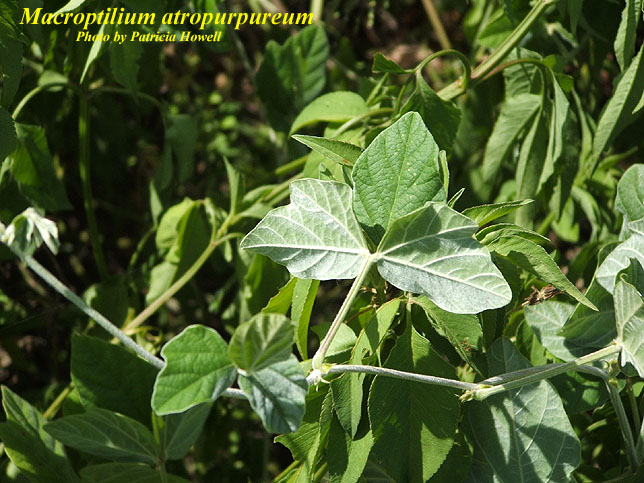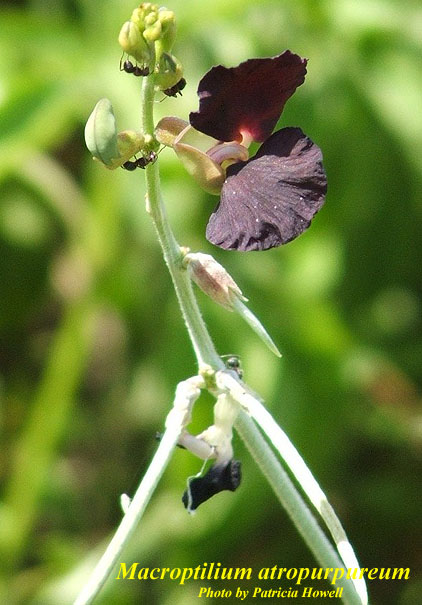Difference between revisions of "Macroptilium atropurpureum"
KatieMccoy (talk | contribs) (→Distribution) |
KatieMccoy (talk | contribs) |
||
| Line 29: | Line 29: | ||
==Ecology== | ==Ecology== | ||
===Habitat=== <!--Natural communities, human disturbed habitats, topography, hydrology, soils, light, fire regime requirements for removal of competition, etc.--> | ===Habitat=== <!--Natural communities, human disturbed habitats, topography, hydrology, soils, light, fire regime requirements for removal of competition, etc.--> | ||
| + | Habitats include disturbed ruderal areas such as lawns, along railroad beds, and pastures (FSU Herbarium). It has great economic importance in cover crop, forage and prevents soil erosion (Cook et al. 2005). | ||
| + | |||
===Phenology=== <!--Timing off flowering, fruiting, seed dispersal, and environmental triggers. Cite PanFlora website if appropriate: http://www.gilnelson.com/PanFlora/ --> | ===Phenology=== <!--Timing off flowering, fruiting, seed dispersal, and environmental triggers. Cite PanFlora website if appropriate: http://www.gilnelson.com/PanFlora/ --> | ||
===Seed dispersal=== | ===Seed dispersal=== | ||
Revision as of 12:58, 9 February 2016
| Macroptilium atropurpureum | |
|---|---|

| |
| Photo by Patricia Howell, Atlas of Florida Vascular Plants | |
| Scientific classification | |
| Kingdom: | Plantae |
| Division: | Magnoliophyta - Flowering plants |
| Class: | Magnoliopsida – Dicotyledons |
| Order: | Ericales |
| Family: | Fabaceae |
| Genus: | Macroptilium |
| Species: | M. atropurpureum |
| Binomial name | |
| Macroptilium atropurpureum (Lam.) K. Koch | |

| |
| Natural range of Macroptilium atropurpureum from USDA NRCS Plants Database. | |
Common name: Purple bushbean
Contents
Taxonomic notes
Description
A perennial species in tropical regions and an annual in subtropical climates. It is a trailing, climbing, twining species with a deep, swollen taproot (Morris 2010).
Distribution
It is a native to tropical continental America, and is distributed through out the tropics [1].
Ecology
Habitat
Habitats include disturbed ruderal areas such as lawns, along railroad beds, and pastures (FSU Herbarium). It has great economic importance in cover crop, forage and prevents soil erosion (Cook et al. 2005).
Phenology
Seed dispersal
Seed bank and germination
Fire ecology
Pollination
The following Hymenoptera families and species were observed visiting flowers of Macroptilium atropurpureum at Archbold Biological Station (Deyrup 2015):
Apidae: Apis mellifera
Megachilidae: Megachile georgica
Use by animals
Diseases and parasites
Conservation and Management
Cultivation and restoration
Photo Gallery
Flowers of Macroptilium atropurpureum Photo by Patricia Howell, Atlas of Florida Vascular Plants
References and notes
Deyrup, M.A. and N.D. 2015. Database of observations of Hymenoptera visitations to flowers of plants on Archbold Biological Station, Florida, USA.
